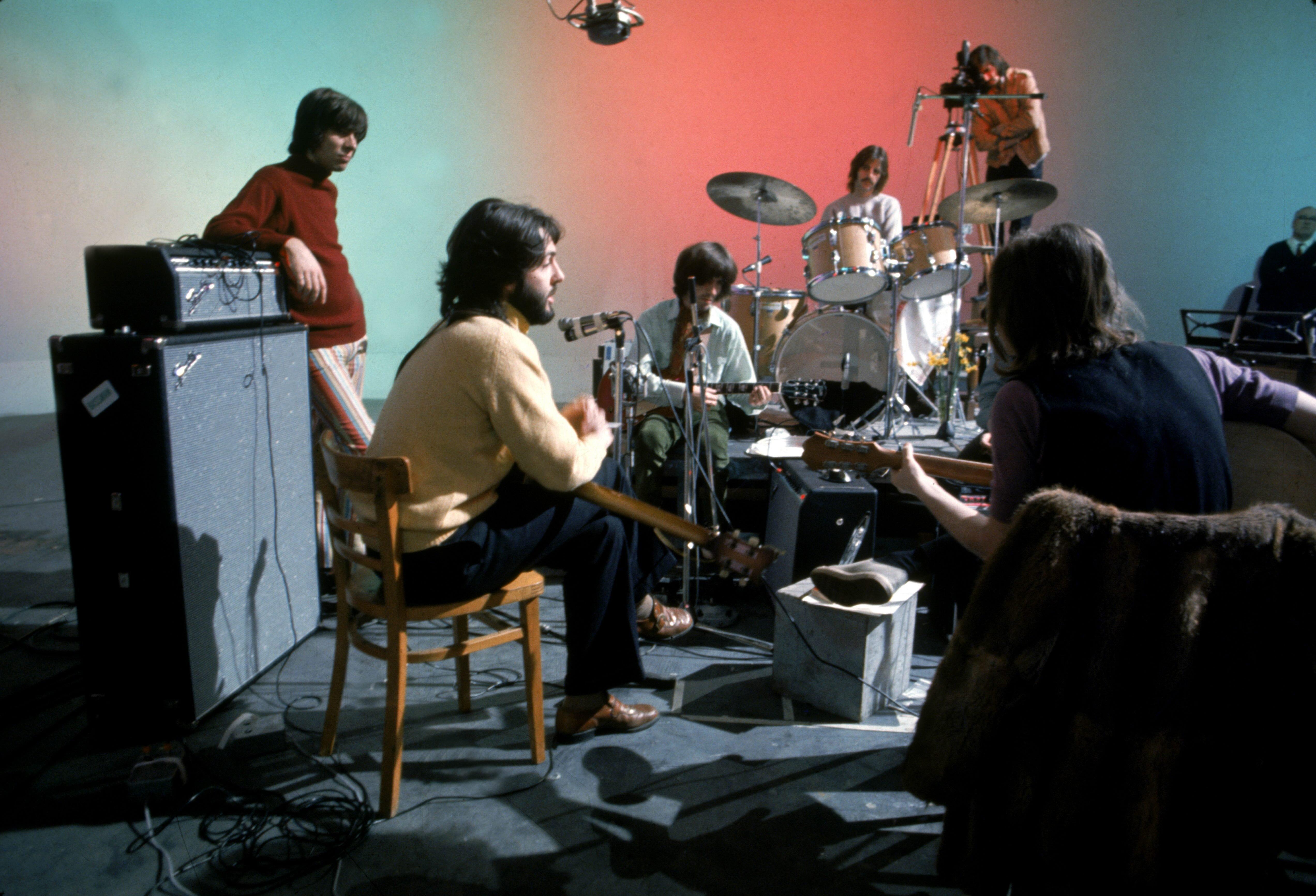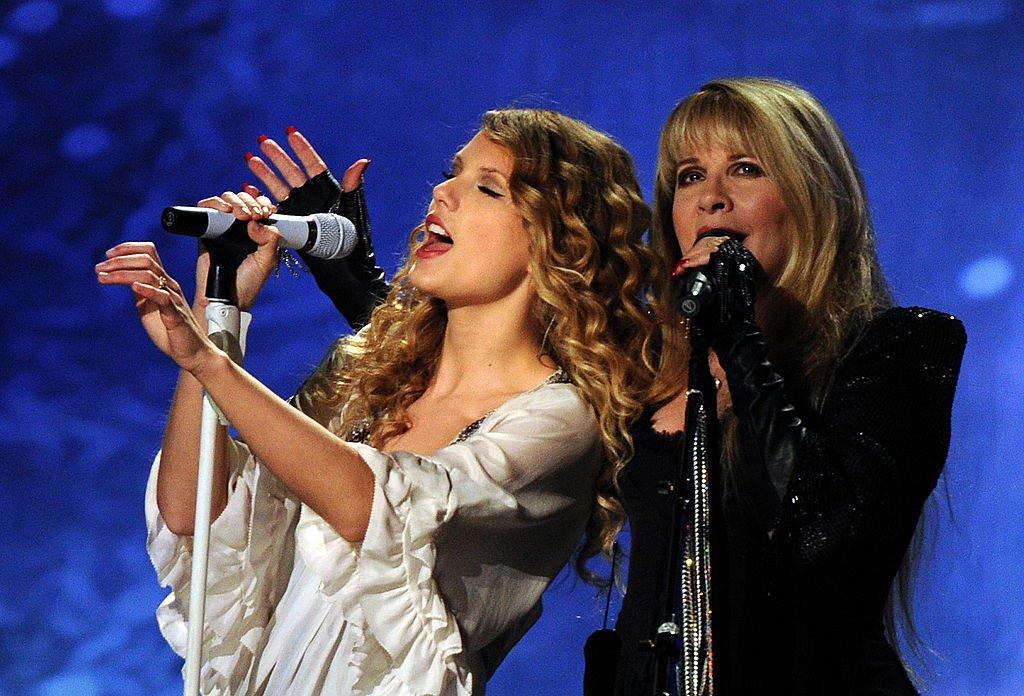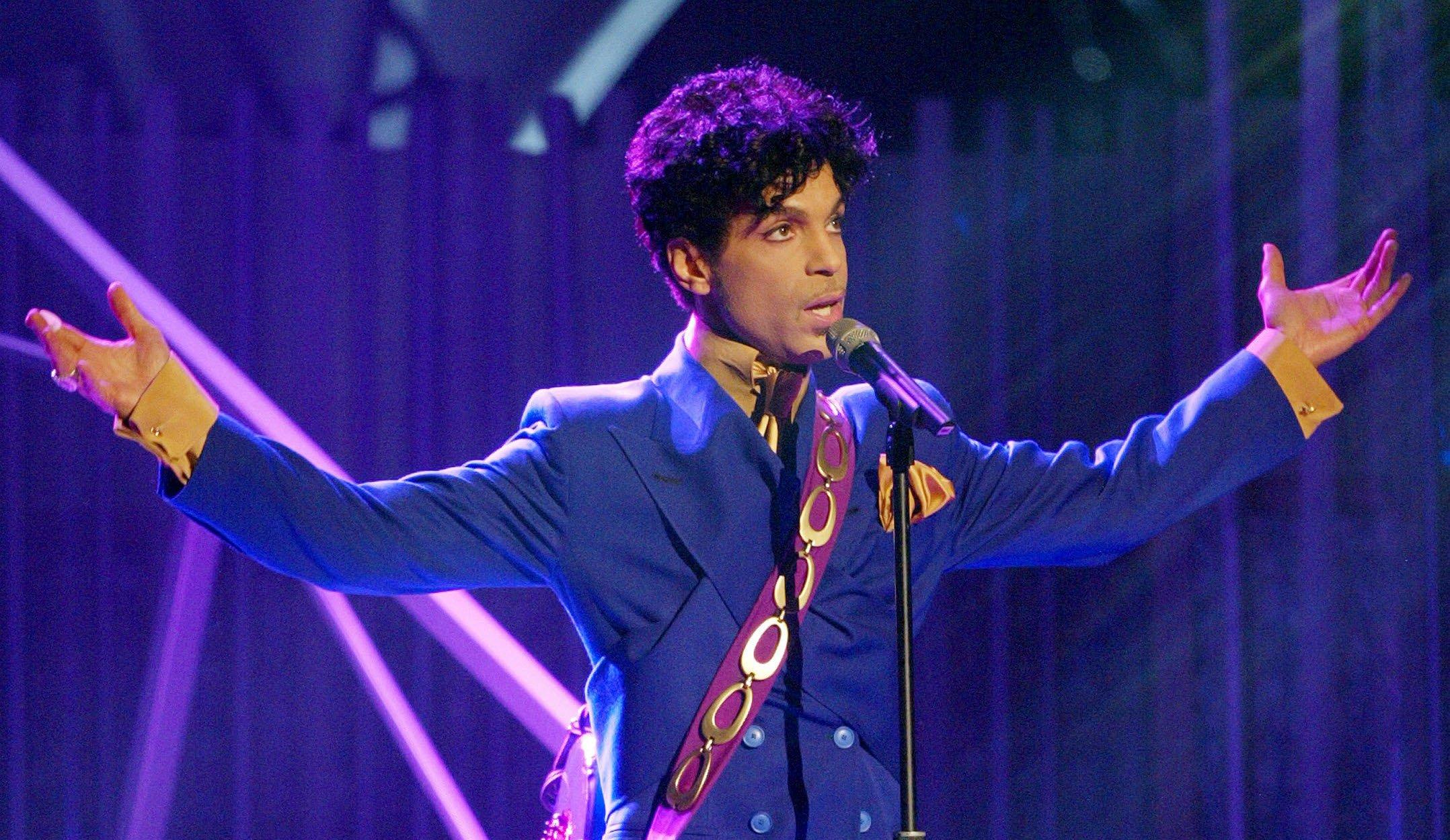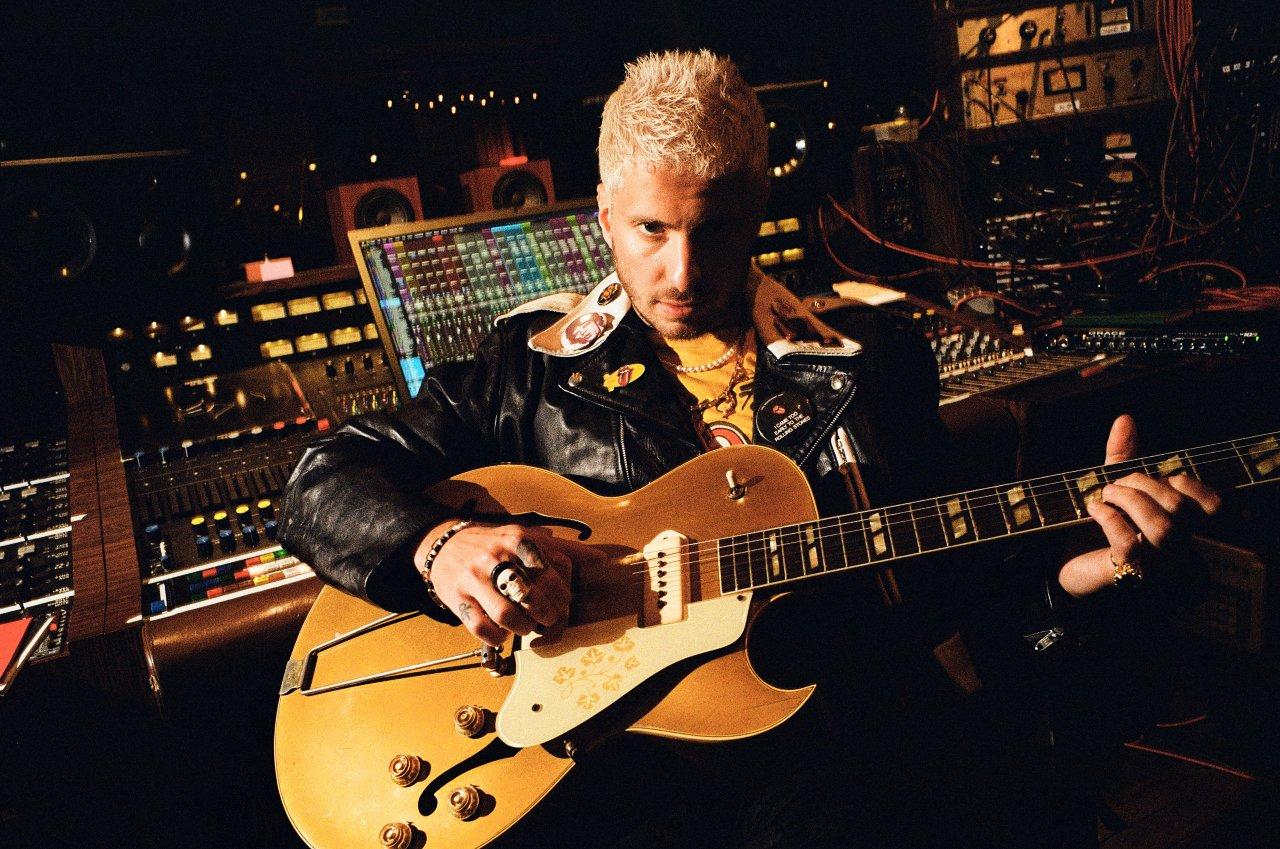With the 55th Annual GRAMMY Awards just one week away, it's time to gear up for the exciting lineup of performances we have in store for this year's show. Some of your favorite artists, from the Black Keys, Fun., Rihanna, and Taylor Swift, to the Lumineers, Carrie Underwood and Jack White, will take the GRAMMY stage this year to give you what will undoubtedly be the Super Bowl of music.
But before GRAMMY Sunday, there's Super Bowl Sunday on Feb. 3, featuring the Baltimore Ravens versus the San Francisco 49ers. And what does everyone look forward to (aside from, of course, the actual game and million-dollar commercials)? The halftime show. Musical performances during the big game date back to Super Bowl I in 1967 when jazz trumpeter Al Hirt and the University of Arizona and Grambling State University marching bands took the field to provide the entertainment. But the halftime show has since gotten bigger. A lot bigger. Now resembling a stadium concert production, GRAMMY-winning artists from Michael Jackson and Tom Petty to Madonna, Prince and U2 have taken the field to perform what their fans (and the GRAMMYs) love most about them — their music.
So as you get all the fixings ready for your big Super Bowl party, pop in this playlist of GRAMMY-winning and -nominated halftime songs from Super Bowls past.
Super Bowl XXVII, Jan. 31, 1993
Dallas Cowboys 52, Buffalo Bills 17
Rose Bowl Stadium, Pasadena, Calif.
"Billie Jean" (iTunes>)
Michael Jackson, Best R&B Vocal Performance, Male, 1983
Ten years after Jackson won GRAMMY honors for this classic, he performed it live at Super Bowl XXVII. Jackson, who was honored with a posthumous Lifetime Achievement Award from The Recording Academy in 2010, also performed "Black Or White" before closing with a heartfelt performance of "Heal The World," backed by a cast of 3,500 local children. Jackson's performance marked the first time an entire Super Bowl halftime show was aired live.
Super Bowl XXXVI, Feb. 3, 2002
New England Patriots 20, St. Louis Rams 17
The Louisiana Superdome, New Orleans
"Beautiful Day" (iTunes>)
U2, Record Of The Year, Song Of The Year, 2000
Two years after winning both Record and Song Of The Year, as well as Best Rock Performance By A Duo Or Group With Vocal honors for "Beautiful Day," U2 brought the luck of the Irish to Super Bowl XXXVI. Rated as the No. 1 Super Bowl halftime show of all time by Sports Illustrated, U2 performed a stirring tribute to the victims of Sept. 11. The band opened the show with "Beautiful Day," followed by "MLK" and an unforgettable rendition of "Where The Streets Have No Name" (which picked up a GRAMMY for Best Performance Music Video in 1988).
Super Bowl XXXVII, Jan. 26, 2003
Tampa Bay Buccaneers 48, Oakland Raiders 21
Qualcomm Stadium, San Diego
"Man! I Feel Like A Woman!" (iTunes>)
Shania Twain, Best Female Country Vocal Performance, 1999
The halftime show during Super Bowl XXXVII was a little bit country, and a little bit rock and roll, as GRAMMY winner Twain was joined onstage by fellow GRAMMY winners No Doubt and Sting. Twain performed this GRAMMY-winning song as well as "Up!" (the title track off her 2003 GRAMMY-nominated Best Country Album). No Doubt performed "Just A Girl" off the band's GRAMMY-nominated Best Rock Album Tragic Kingdom, and Sting teamed with lead singer Gwen Stefani for a rendition of "Message In A Bottle," off the Police's 1979 album Reggatta De Blanc, which earned the title track a GRAMMY for Best Rock Instrumental Performance in 1980.
Super Bowl XXXVIII, Feb. 1, 2004
New England Patriots 32, Carolina Panthers 29
Reliant Stadium, Houston
"All For You" (iTunes>)
Janet Jackson, Best Dance Recording, 2001
Who could forget the unfortunate (or fortunate if we're talking about network ratings) wardrobe malfunction at Super Bowl XXXVIII? The malfunction in question happened during a performance of "Rock Your Body" by Jackson and fellow GRAMMY winner Justin Timberlake. The performance was ranked as the No. 4 Super Bowl halftime show of all time by Sports Illustrated, and the song drove Timberlake to the top five on the Billboard Hot 100. Jackson also performed the GRAMMY-winning "All For You" during the show, and other performances included Nelly's "Hot In Herre" (which earned the rapper Best Male Rap Solo Performance honors in 2002), Sean "Diddy" Combs' rendition of "Mo' Money, Mo' Problems" and Kid Rock's "Bawitdaba."
Super Bowl XXXIX, Feb. 6, 2005
New England Patriots 24, Philadelphia Eagles 21
Alltel Stadium, Jacksonville, Fla.
"Hey Jude" (iTunes>)
Paul McCartney, GRAMMY Hall Of Fame, 2001
No stranger to the stadium environment, McCartney headlined Super Bowl XXXIX in 2005. The year proved to be big for the New England Patriots, who beat the Philadelphia Eagles for their third championship in a span of four seasons. McCartney closed the show with a crowd-pleasing rendition of "Hey Jude," the Beatles classic that earned the group a Record Of The Year nomination in 1968 and a GRAMMY Hall Of Fame induction in 2001. McCartney also performed the Beatles' "Drive My Car" and "Get Back," and his solo James Bond hit "Live And Let Die." McCartney, who has won 15 GRAMMY Awards to date, was honored with a Recording Academy Lifetime Achievement Award in 1990 and was honored as the 2012 MusiCares Person of the Year.
Super Bowl XL, Feb. 5, 2006
Pittsburgh Steelers 21, Seattle Seahawks 10
Ford Field, Detroit
"(I Can't Get No) Satisfaction" (iTunes>)
The Rolling Stones, GRAMMY Hall OF Fame, 1998
The Rolling Stones made their Super Bowl debut on a stage that was fashioned as a replica of the band's trademark tongue logo. The Stones, who were honored with a Recording Academy Lifetime Achievement Award in 1986, performed "Start Me Up" and "Rough Justice" before closing out the show with this GRAMMY Hall Of Famer. Before introducing "Satisfaction," frontman Mick Jagger joked, "Here's one we could have done at Super Bowl I." Sports Illustrated ranked the performance as the No. 10 all-time halftime show. GRAMMY spectators were satisfied again in 2011 when Jagger took the stage to perform a special tribute to the late Solomon Burke with Raphael Saadiq on the 53rd Annual GRAMMY Awards telecast.
Super Bowl XLI, Feb. 4, 2007
Indianapolis Colts 29, Chicago Bears 17
Dolphin Stadium, Miami
Purple Rain (iTunes>)
Prince, Best Album Of Original Score Written For A Motion Picture Or Television Special, 1984
Prince put on a royal performance at Super Bowl XLI in 2007. The artist currently known as Prince launched the show with a performance of "Let's Go Crazy," followed by covers of Bob Dylan's "All Along The Watchtower," John Fogerty's "Proud Mary" and the Foo Fighters' "Best Of You." Prince closed the show with the title track off his GRAMMY-winning album Purple Rain just as it started to, coincidentally, rain. The performance ranked as Sports Illustrated's No. 2 all-time halftime show.
Super Bowl XLII, Feb. 3, 2008
New York Giants 17, New England Patriots 14
University of Phoenix Stadium, Glendale, Ariz.
"Free Fallin'" (iTunes>)
Tom Petty And The Heartbreakers, Best Male Rock Vocal Performance, nominee
Petty and his Heartbreakers launched the Super Bowl XLII halftime show with "American Girl" and the New York Giants were victorious over the New England Patriots as 97.5 million TV viewers tuned in. "American Girl" was followed by "I Won't Back Down" and the Billboard Hot 100 top 10 track "Free Fallin,'" off Petty's GRAMMY-nominated Album Of The Year Full Moon Fever.
Super Bowl XLIII, Feb. 1, 2009
Pittsburgh Steelers 27, Arizona Cardinals 23
Raymond James Stadium, Tampa, Fla.
"Working On A Dream" (iTunes>)
Bruce Springsteen, Best Solo Rock Vocal Performance, 2009
Fresh off scoring his 20th GRAMMY win, Springsteen was the Boss of Super Bowl XLIII with a set that worked like a dream as the Pittsburgh Steelers celebrated their sixth championship with a win over the Arizona Cardinals. The Super Bowl franchise was on a roll at this point in terms of booking veteran acts and the Boss did the trend justice. Performing with the E Street Band, Springsteen launched into "Tenth Avenue Freeze-Out," followed by "Born To Run," the GRAMMY-winning "Working On A Dream," and "Glory Days." More glory days are ahead for Springsteen as he will be honored during GRAMMY Week this year as the 2013 MusiCares Person of the Year.
Super Bowl XLIV, Feb. 7, 2010
New Orleans Saints 31, Indianapolis Colts 17
Sun Life Stadium, Miami
"Baba O'Riley" (iTunes>)
The Who, Recording Academy Lifetime Achievement recipients
Keeping in line with the running list of veteran acts who have played the Super Bowl halftime show, the Who performed as the New Orleans Saints beat the Indianapolis Colts. Roger Daltrey and Pete Townshend (seemingly younger than ever) launched the show with "Pinball Wizard" before transitioning into "Baba O'Riley," which featured Daltrey huffing out a closing harmonica solo. The band ended the show with "Who Are You," a brief snippet of "See Me, Feel Me" and "Won't Get Fooled Again."
Super Bowl XLV, Feb. 6, 2011
Green Bay Packers 31, Pittsburgh Steelers 25
Cowboys Stadium, Arlington, Texas
"I Gotta Feeling" (iTunes>)
Black Eyed Peas, Best Pop Performance By A Duo Or Group With Vocals, 2006
Breaking what had become a string of veteran acts taking the stage for the Super Bowl halftime show, the Black Eyed Peas kicked off their glitzy, LED lights-filled performance with a boom, boom pow. After being delivered onto the stage via what seemed like floating saucers, the Peas opened with their feel-good GRAMMY-winning hit "I Gotta Feeling" before shuffling into "Boom Boom Pow." Reminiscent of Fergie's performance with Slash at the 2010 Pre-GRAMMY Gala, the guitarist joined the group onstage for a rendition of Guns N' Roses' classic "Sweet Child O' Mine." GRAMMY winner Usher also took the stage to perform "OMG" with will.i.am. The group turned up the volume again for "Pump It," "Let's Get It Started," "Where Is The Love," and "The Time (Dirty Bit)." And there were plenty of song-and-dance routines to go around. Super Bowl XLV packed an extra boom, drawing a record 111 million viewers.
Super Bowl XLVI, Feb. 5, 2012
New England Patriots v. New York Giants
Lucas Oil Stadium, Indianapolis
"Music" (iTunes>)
Madonna, Record Of The Year nominee, 2000
Madonna struck a pose and made an impression at Super Bowl XLVI with her party-rocking performance. The GRAMMY-winning pop goddess emerged onstage decked out in an Egyptian-themed outfit and into the arms of groups of Trojans. The performance kicked off with her No. 1 1990 hit "Vogue" and then segued into the GRAMMY-nominated dance theme "Music" before Madonna was joined by fellow party-rockers LMFAO for a rendition of their GRAMMY-nominated hit "Party Rock Anthem." Everybody was clearly having a good time as LMFAO and Madge broke into a shuffle, proving all three are good at working out and, well, are sexy and they know it. Other guests performers included Nicki Minaj and M.I.A., who joined for "Gimme All Your Luvin'," and Cee Lo Green, who came onstage to express himself. Green changed into his choir attire and closed the show with Madonna for a performance of "Like A Prayer."
Super Bowl XLVII, Feb. 3, 2013
Baltimore Ravens vs. San Francisco 49ers
Mercedes-Benz Superdome, New Orleans
Beyoncé
This year's Super Bowl halftime show is shaping up to be one of the most anticipated live sets yet, as rumors have surfaced that Beyoncé will team with her bootylicious sisters in-arms for a Destiny's Child reunion. Whether this reunion will come to fruition remains to be seen, but viewers tuning in to the halftime show on Feb. 3 are sure to be in for a treat if these rehearsal photos of her coming show are any indication. Prior to the game's start, New Orleans will welcome a girl on fire as Alicia Keys will perform "The Star-Spangled Banner." Let us know your favorite halftime show.
Tune in to the 55th Annual GRAMMY Awards live from Staples Center in Los Angeles on Sunday, Feb. 10 at 8 p.m. ET/PT on CBS. For GRAMMY coverage, updates and breaking news, visit The Recording Academy's social networks on Twitter and Facebook.




